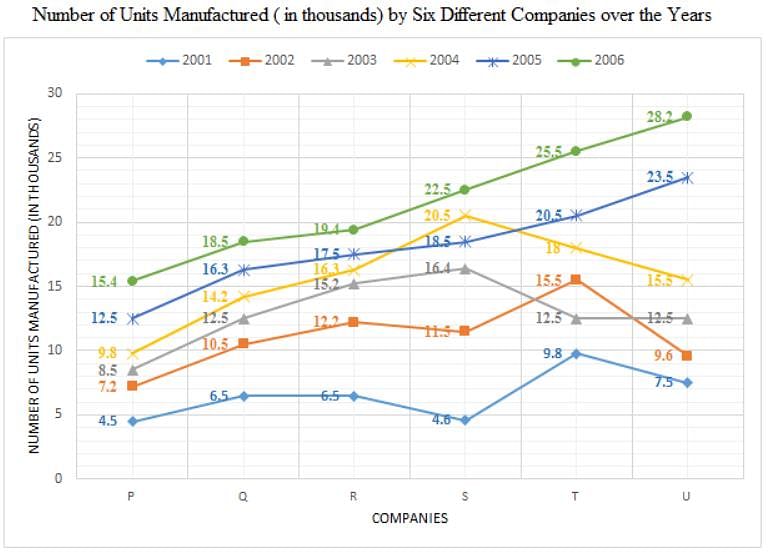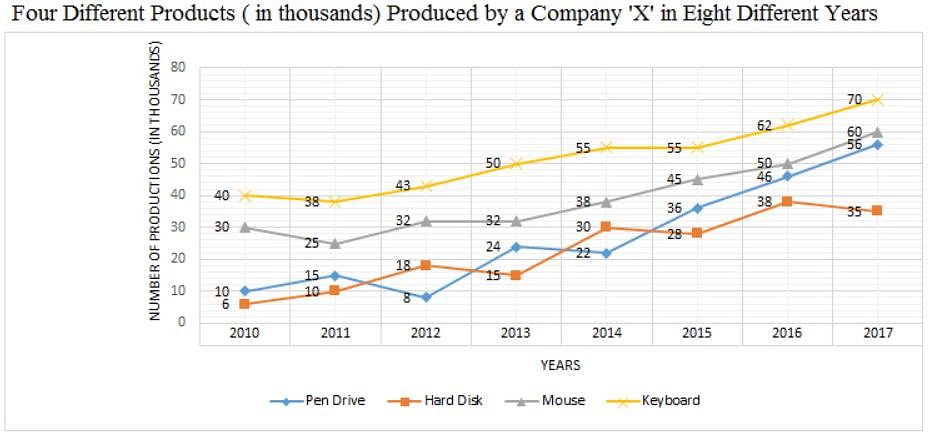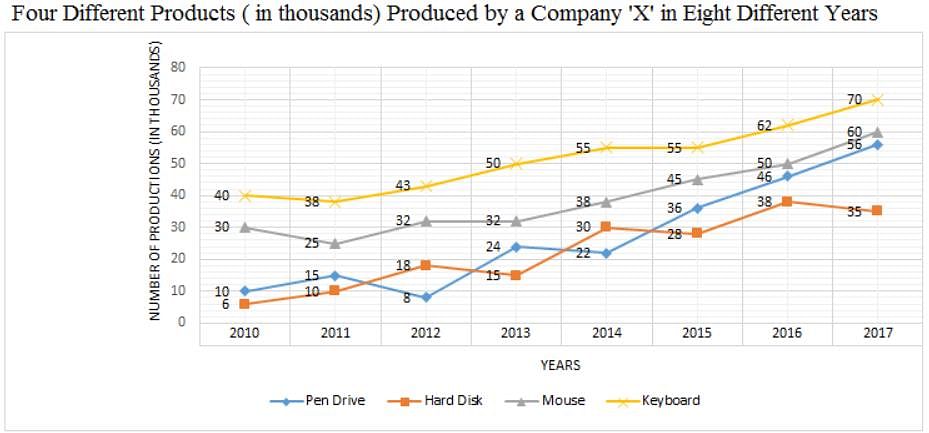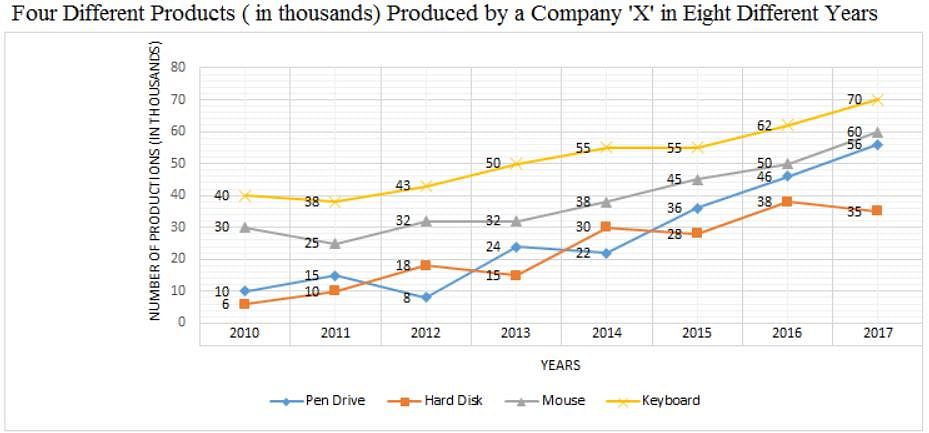VITEEE PCBE Mock Test - 14 - JEE MCQ
30 Questions MCQ Test VITEEE: Subject Wise and Full Length MOCK Tests - VITEEE PCBE Mock Test - 14
| 1 Crore+ students have signed up on EduRev. Have you? Download the App |
Directions: Study the following graph carefully and answer the question given below.

Q. What is the respective ratio of total number of units manufactured by companies Q and R together in the year 2001 to those manufactured by companies S and T together in the year 2003?
Directions: Study the following graph carefully and answer the question given below.

Q. What is the average number of hard disks produced by Company 'X' over all the years together?
Directions: Study the following graph carefully and answer the question given below.

Q. What is the difference between the total number of hard disks and mouses produced by Company 'X' in the year 2010 and the total number of keyboards and pen drives produced by Company 'X' in the year 2015?
Directions: Study the following graph carefully and answer the question given below.

Q. What was the respective ratio between the number of pen drives produced by Company 'X' in the years 2010, 2011, 2014 and 2015 and the number of hard disks produced by Company 'X' in the years 2011, 2012, 2015 and 2017?
Anita had to do a multiplication. Instead of taking 35 as one of the multipliers, she took 53. As a result, the product went up by 540. What is the new product?
A red light flashes three times per minute and a green light flashes five times in 2 min at regular intervals. If both lights start flashing at the same time, how many times do they flash together in each hour?
Let S be the set of prime numbers greater than or equal to 2 and less than 100. Multiply all the elements of S. With how many consecutive zeroes will the product end?
In a stream, Q lies in between P and R such that it is equidistant from both P and R. A boat can go from P to Q and back in 6 hours 30 minutes while it goes from P to R in 9 hours. How long would it take to go from R to P?
If A and B together can complete a piece of work in 15 days and B alone in 20 days, in how many days can A alone complete the work?
A and B together can do a piece of work in 50 days. If A is 40% less efficient than B, in how many days can A working alone complete 60% of the work?
|
1 videos|2 docs|73 tests
|
|
1 videos|2 docs|73 tests
|

















